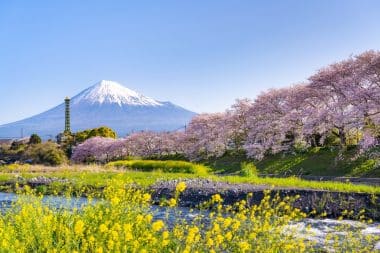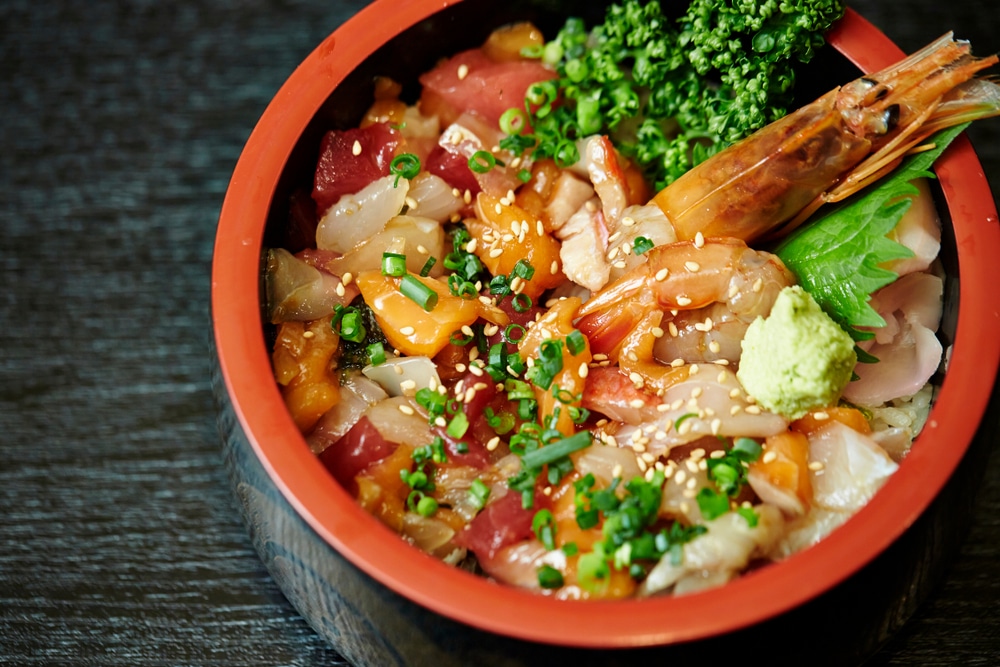Japan – a country full of fascinating culture, breathtaking landscapes and unparalleled cuisine. For many travelers, Japanese cuisine is the highlight of the trip. But what do you do if you have already tasted the typical menu and drink menus during your first stay and are looking for new culinary adventures?
Then this guide is perfect for planning your next adventure “Culinary Japan”.
With the train to new culinary delights
Japan’s diverse cuisine entices with regional specialties and old traditions. Away from the metropolises, authentic taste experiences await explorers in remote corners.
If you want to experience Japan again with culinary delights, you are looking for relaxation and comfort. Driving a car in a foreign country with unfamiliar writing and language is not very appealing. Japan’s sophisticated train system offers the perfect solution. Slow trains and high-speed connections bring travelers quickly to their destination.
Even more convenient: Simply book Japan regional train tickets online and avoid long waiting times. So nothing stands in the way of an enjoyable journey through Japan’s delicious world!
Discover Japan in a new culinary way
Off the beaten path, you’ll find Japan’s true treasures, which have been celebrated for centuries. The cuisine is closely linked to the culture and history of Japan. From fresh seafood in Hokkaido to hearty noodle dishes in Kyushu, Japan has something new for everyone.
1. Discover regional specialties
Whether it’s a holiday or a short trip. To experience Japan’s diverse cuisine off the beaten track, it is helpful to know the regional specialties. This allows the trip to be planned optimally without missing out on culinary highlights.
Hokkaido: In the north of Japan, fresh seafood, crab, and ramen are offered. Kaisendon (raw fish fillet with seafood), Ishikari Nabe (stew with salmon and vegetables) and Hokkaido ramen with miso broth are not on every menu and are very special.
Tohoku: This region is known for delicious beef, morioka rhymes (cold noodles with spicy sauce), and Nambu Jiru (stew with vegetables and miso). If you want to try special variations, stop at a small restaurant.
Kanto: Experience Nagoya in a different way – the best way to do this is with tebasaki (deep-fried chicken wings in spicy sauce), hitsumabushi (grilled eel on rice with various toppings) and kishimen (flat noodles in mild dashi broth). In Tokyo , monjayaki (hearty liquid pancake), denbu (grated fish paste) and – for the slightly thicker purse – nodoguro (rare and expensive fish) await culinary adventurers.
Kansai: The region is known for takoyaki (squid balls) and okonomiyaki (savory pancakes). However, it gets more special in Kyoto. The multi-course Kaiseki-Ryōri menu changes seasonally and offers many surprises. Also not to be sneezed at is the local Kanazawa curry made from beef. In winter, the juicy Zuwaigani crabs are an insider tip!
Chugoku: Hiroshima is historically significant and attracts many visitors to its museums. Culinarily, the Okonomimura district is a hit for its hearty pancakes made according to old family recipes.
Shikoku: This region should be planned after one of the many Awa Odori. The dance festivals offer various street stalls with traditional dishes. An absolute must, even for returners.
Kyushu: Foodies will get their money’s worth here. Mentaiko (spicy caviar paste made from red fish roe), Kagoshima kurobuta (black pork) and yufuin mochi (sweet rice cakes from the city of Yufuin) are rather unknown among tourists and are waiting to be tasted.
Tip: Locals know where it tastes best and are always ready to recommend local markets, seasonal ingredients and regional specialties. Perfect for diving deeper into Japanese culture.
2. From citrus fruits to stews: Shizuoka

Shizuoka is a prefecture in Japan known for its beautiful scenery and mild climate. Typically, tourists are attracted by the regional high-quality green tea, unagi (freshwater eel) and sakuramochi.
However, returnees are on the lookout for that special something. One of them is Fujinomiya Yakisoba. The thin wheat noodles with spicy sauce, pork and cabbage are garnished with red ginger and katsuobushi (bonito flakes), which give a slightly smoky note. It goes well with Yoshiwara Yaki, a flatbread made from wheat flour filled with a mixture of vegetables, mushrooms and konbu seaweed.
Mochi-mal-anders is available in Shizuoka in the form of Abekawa Mochi. Instead of round, the dumplings are rolled elongated, spread with sweet soybean paste and turned in roasted Kinako soy flour.
Tip: The local tangerines Mikan are always a treat as juice or jam.
3. Izakaya hopping
Izakaya pubs are common throughout Japan in cities and in the countryside. The mostly quaint pubs offer a wide variety of small dishes (izakaya dishes) that are meant to be shared and tasted. In addition to the usual dishes, each pub offers small specialties, such as uni (sea urchins), natto (fermented soybeans), shirasu (small sardines), ikizukuri (live seafood prepared right before consumption) or reba miso (pickled liver in miso paste).
Tip: The same applies here: observe locals and reorder.
4. Local markets and festivals
If you like it fresh and authentic, you should visit as many local markets and festivals as possible. Here, dishes are often prepared in front of the guests. This not only rounds off the taste, but also the experience. Street food paired with a lively atmosphere – it makes you feel like a local.
Tip: Many local restaurants as well as private chefs offer cooking classes. In this way, you not only learn to cook local dishes, but also get to know Japanese culture and its traditions up close.
5. Sake and Shochu
Sake belongs to Japan, like the Eiffel Tower to Paris, and is therefore not an insider tip. But as with wines and the local beers in Germany, there are hundreds of different types of sake and shochu. These include various local dishes that skilfully round off the taste of the varieties.
Tip: A visit to a sake brewery or a shochu distillery is perfect to deepen your knowledge even more and understand the local traditions more intensively.


